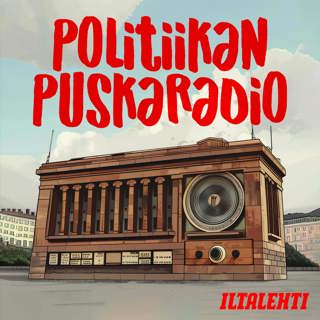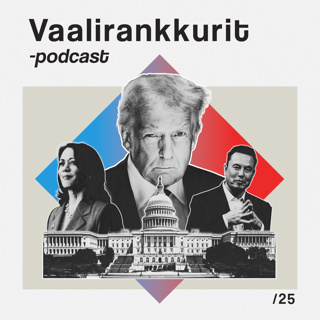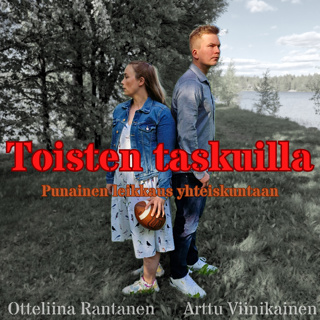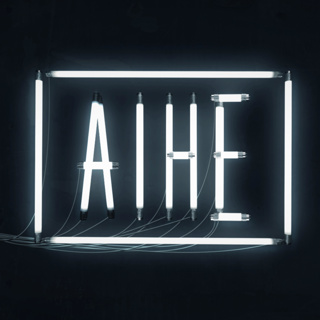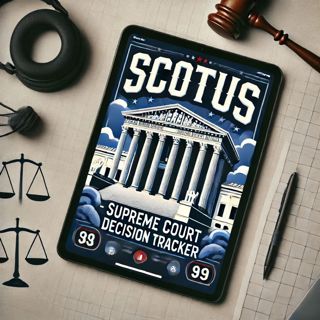
Bangladesh Supreme Court's Quota Reform Sparks Protests: Balancing Equality and Merit in Public Sector Employment
In Bangladesh, a significant Supreme Court ruling has drastically altered the landscape of government employment by effectively dismantling the longstanding quota system that reserved a significant percentage of jobs for specific groups. This decision came in response to intense and sustained protests led by students and youth activists who opposed what they perceived as an unfair system that stymied equal opportunity in public sector employment.The students argued that the quota system, which was initially designed to help underrepresented and disadvantaged groups, had become a barrier to meritocracy, making it difficult for many capable individuals to enter government service based on their abilities. The system reserved a high percentage of government job positions for the families of veterans and certain disadvantaged groups, which many protestors claimed was disproportionate and no longer reflected the country's current needs or demographics.The Supreme Court's intervention to reduce the quotas significantly was seen as a victory for the demonstrators. However, the aftermath of the court's decision was not peaceful. The ruling sparked a series of further protests, some of which turned violent. According to reports, the unrest surrounding these demonstrations resulted in numerous casualties, indicating the high level of tension and discontent among the youth regarding job allocation practices.The government's response to the protests and the violence has been a critical issue. There have been calls from student leaders and activists for the release of individuals detained during the demonstrations, arguing that their protests were a legitimate form of civil disobedience against a deeply flawed system.This ruling by the Bangladesh Supreme Court underscores the complex interplay between government policy, judicial intervention, and public sentiment. It highlights the delicate balance of addressing historical inequalities while also promoting fairness and meritocracy in public sector employment. As the government works to implement the court's decision, the primary challenge will be to ensure that any new system addresses the concerns that led to the protests while maintaining public order and trust in the system's fairness.The situation in Bangladesh serves as a potent reminder of the role of judiciary in societal reforms and the power of youth-led movements in shaping policy discussions. It also brings to light the responsibilities of a government in managing the fallout of such transformative decisions and fostering an environment where every citizen has the opportunity to compete on an equal footing.This content was created in partnership and with the help of Artificial Intelligence AI
21 Heinä 20242min

Seismic Shifts in the Supreme Court: Redefining Corruption, Limiting Citizen Recourse, and Potential Reforms
The U.S. Supreme Court, under Chief Justice John Roberts, appears to be embroiled in critical decisions and shifting perspectives that may significantly reshape its standing, judicial responsibilities, and impacts on American political and judicial landscapes. Recent developments highlight notable shifts in definitions of corruption, issues of immunity, and discussions about potential reformation of the Court itself, reflecting a complex interplay of legal interpretations, politics, and the unprecedented personal controversies surrounding figures such as former President Donald Trump.The Supreme Court's decision to redefine what constitutes an “official act” stands out notably, particularly in cases involving political figures. This redefinition has implications for figures like Donald Trump, potentially altering the legal landscape regarding what actions are considered corrupt and what are within permissible bounds of elected officials' duties. Such a reinterpretation by the Supreme Court not only questions the consistency and continuity of legal precedents but also raises concerns about the impartiality and the politicization of the judiciary.Simultaneously, the notion of Supreme Court reform has gained momentum, underscored by conversations surrounding massive shifts that include potential expansions of the Court, establishment of term limits, and the implementation of a binding code of ethics for justices. These proposals aim to address growing unease regarding the Supreme Court's decisions, perceived overreaches, and the broader implications of its rulings on American democracy. President Joe Biden's possible endorsement of such reforms indicates a critical viewpoint from the executive branch about the necessity to maintain the judiciary’s integrity and adaptability in changing times.Additionally, the Supreme Court’s approach toward lawsuits, including those initiated by conservatives, has signaled a tightening stance on who can sue and under what circumstances. This approach not only affects the reach of state powers, particularly as seen in directives to the 5th Circuit, which deals with appeals from federal courts in Republican-led states such as Texas, but it also sets a precedent that could restrict citizens' ability to challenge governmental and corporate actions.The broader implications of these shifts are profound. Redefining corruption, restricting legal recourse for citizens, and potentially reforming the Court altogether, reflect an evolving legal landscape where old precedents may give way to new norms. These changes could permanently alter the balance of power between the state and the individual, and between different branches of government.These dynamics underscore a pivotal period in U.S. constitutional history. As the nation grapples with these changes, the integrity and the role of the judiciary hang in the balance, prompting a reevaluation of how justice is administered and the very structure of the institution meant to impartially uphold the law. The decisions made during this period are likely to resonate through the American legal and political systems for generations to come, shaping the nature of democratic governance in the United States.This content was created in partnership and with the help of Artificial Intelligence AI
19 Heinä 20243min

"South Korea's Landmark LGBTQ Rights Ruling: A Pivotal Step Towards Equality"
In a landmark ruling, the Supreme Court of South- Korea has upheld a significant decision in favor of LGBTQ rights, specifically regarding spousal benefits under national health insurance. The case revolved around a gay couple's quest to secure these benefits, akin to those granted to heterosexual couples, highlighting ongoing struggles for equality in family law and spousal recognition within the country.This Supreme Court verdict is a critical turning point for South Korea, a nation where both legal and societal norms have traditionally leaned conservative, particularly on issues of sexual orientation and gender identity. Despite vibrant LGBTQ communities in urban centers like Seoul, broader legal recognition and rights have lagged behind those of some other nations. Prior to this decision, same-sex couples were not recognized under South Korean law, thus denying them the various legal protections available to opposite-sex married couples.The decision by South Korea's Supreme Lourt dismisses a government appeal that contested the rights of same-sex couples to spousal benefits, thereby setting a legal precedent that may propel further legislative and judicial enhancements of LGBTQ rights in South Korea. This could potentially catalyze changes in other realms of law and policy, such as marriage, adoption, and anti-discrimination protections.The ruling is not just a legal victory but also a significant cultural milestone. It reflects changing attitudes within South Korean society, where there's a growing acknowledgment of the need for greater inclusivity and equality. Public opinion on LGBTQ rights in South Korea has shown signs of a positive shift in recent years, particularly among the younger demographic, who tend to display greater acceptance compared to older generations.However, the journey toward full legal equality remains uphill. South Korea does not yet allow same-sex marriage, and comprehensive anti-discrimination laws that include protections based on sexual orientation and gender identity are still pending. This Supreme Court decision, therefore, is a hopeful indicator of future progress, but it also amplifies the call for comprehensive legal reforms.The impact of such a high court decision extends beyond the immediate benefits to the couple involved. It sets a legal and moral precedent, providing a judicial interpretation that could be cited in future legal challenges and potentially accelerating legislative reforms to secure broader equal rights.The ruling could also influence broader social and cultural perceptions of LGBTQ individuals in South Korea, fostering greater acceptance and understanding. In the long run, this decision might contribute to a shift in societal values, helping to dismantle existing prejudices and enabling a more inclusive environment for all citizens regardless of their sexual orientation or gender identity.Internationally, this decision places South Korea at an interesting juncture with respect to global trends in LGBTQ rights, joining a host of other nations that have recently expanded legal recognitions and protections for same-sex couples. It communicates to the international community the country's evolving legal landscape and its steps towards aligning with international human rights standards.As South Korea continues on this path, the developments following this Supreme Court ruling will be pivotal in shaping the country's legal and societal future concerning LGBTQ rights and could inspire similar advancements in neighboring countries in the region.This content was created in partnership and with the help of Artificial Intelligence AI
18 Heinä 20243min

"Supreme Court's Expansive Reach: Transforming Homelessness, Tax Regulations, and Individual Fates"
In a recent series of rulings and interventions, the U.S. Supreme Court has significantly impacted various aspects of public policy and individual cases, highlighting the expansive reach and influence of the Court's decisions across different spheres of American life.In one notable decision, conservative justices of the Supreme Court have granted more authority to city mayors to manage homelessness issues within their jurisdictions. This decision raises significant questions about the extent to which city officials can go in policing homelessness, specifically regarding the clearing of encampments and the empowerment of police to arrest those sleeping on public property. This ruling has sparked a debate particularly along the West Coast, where cities like Los Angeles, San Francisco, and Seattle have been grappling with increasing homelessness rates and the complexities of managing public spaces. Critics argue that such measures could criminalize poverty and worsen the plight of the homeless, while proponents assert the need for order and public health considerations.Another critical area affected by the Supreme Court's decisions involves the Internal Revenue Service (IRS) regulations. The complexity of IRS codes and the nuances of tax regulations are set to experience heightened litigation, possibly complicating the enforcement of tax laws. This increased potential for litigation could result from recent Court decisions that scrutinize the statutory authority of federal agencies, signaling challenges not only for the IRS but possibly for the broader landscape of federal regulatory powers.Moreover, the Supreme Court demonstrated its significant influence on individual lives through its intervention in specific legal cases. A poignant example is the stay of execution granted to Texas man Ruben Gutierrez. Gutierrez, who was scheduled for lethal injection, received a last-minute reprieve from the Supreme Court, highlighting the Court's critical role in matters of life and death. This intervention underscores the Court's ongoing involvement in capital punishment cases and its capacity to affect the course of individual justice proceedings.These examples not only illustrate the broad and varied implications of Supreme Court decisions but also emphasize the transformative power such rulings have on public policy, administrative governance, and individual rights. As such, these decisions provoke important discussions about the balance of powers, the role of the judiciary in contemporary societal issues, and the evolving landscape of American law and governance. Each decision, therefore, does not exist in isolation but resonates through various layers of American life, influencing public discourse and shaping the nation's legal and moral framework.This content was created in partnership and with the help of Artificial Intelligence AI
17 Heinä 20242min

"Seismic Shifts in US Governance: Supreme Court Rulings Reshape Legal Landscape"
Recent actions by the U.S. Supreme Court have ignited discussions and debates across the nation about its role and influence on American democracy. Two landmark decisions are at the forefront of these conversations: the overturning of Roe v. Wade and the annulment of the Chevron doctrine. These rulings underscore a pattern in the Court's approach to molding national legal precedents and have profound implications for the separation of powers among the branches of the U.S. government.The overturning of Roe v. Wade effectively withdrew the constitutionally protected right to abortion, a right that had been recognized for nearly half a century. This decision not only impacts millions of women across the nation but also shifts the regulatory power over abortion rights to individual states, many of which had preemptively passed laws to automatically ban or drastically restrict abortions upon this anticipated ruling. The Supreme Court's decision to move away from Roe v. Wade represents a significant realignment in the interpretation of privacy and personal autonomy under the Constitution.In parallel, the Supreme Court's annulment of the Chevron doctrine marks another decisive shift. The Chevron doctrine, established in 1984, instructed courts to defer to a federal agency's interpretation of ambiguous statutes that the agency administers. By setting aside this precedent, the Supreme Court constrained the interpretive authority of federal agencies, potentially altering how environmental regulations, worker protections, and other regulatory issues will be enforced.These decisions have drawn criticism from various quarters, including President Joe Biden, who has declared the Court "out of touch with what the founders intended." This critique highlights a broader question about the extent to which the Supreme Court is currently influencing, if not outright determining, social and political issues traditionally managed by the legislative or executive branches.The case involving former House Speaker Michael Madigan further illustrates the Supreme Court's influence over American legal and political landscapes. Madigan's lawyers have moved to dismiss parts of his indictment for alleged bribery, leveraging a recent Supreme Court decision that narrowed the scope of what constitutes illegal activity under federal bribery laws. This case is one of many that might see significant shifts in legal strategy and outcomes based on the precedent set by the Supreme Court's recent interpretations.These developments raise questions about the balance of power in the U.S. government and the Supreme Court's role in American democracy. Critics argue that the Court is stepping beyond its judicial duties into the realms of policy-making and political advocacy, areas traditionally managed by elected bodies. Supporters contend that the Court is merely fulfilling its role in interpreting the Constitution. The decisions made by this Court will reshape how laws are interpreted and implemented for years, if not generations, impacting everything from individual rights to how agencies regulate businesses and protect the environment. As such, the tension between the Court's decisions and public opinion is likely to intensify, driving further debate on the nature of judicial power and its limits in modern American governance.This content was created in partnership and with the help of Artificial Intelligence AI
16 Heinä 20243min

Supreme Court's Pivotal Role in Shaping Federal Policy and Environmental Regulations
The Supreme Court of the United States has been at the center of significant judicial scrutiny as it tackles controversial decisions that reverberate across the legal and political landscape of the country. One particular area of focus has been its approach to federal authority and environmental regulations, as well as its involvement in high-profile cases such as those related to the January 6, 2021, Capitol riot.A recent case that highlights the Supreme Court’s influence on federal legal proceedings involves Topekan Will Pope. His trial, connected to charges from the January 6 Capitol riot, was delayed following a Supreme Court decision concerning the treatment of obstruction charges. This decision is critical as it potentially sets a precedent that could influence the outcome of numerous other cases involving defendants charged with similar offenses during the Capitol breach. The specifics of the obstruction charge, that is, what constitutes an obstruction of an official proceeding, and whether the actions of defendants like Pope meet such criteria, are central to these judicial deliberations.Furthermore, the Supreme JCourt is seen as positioning itself to impose more stringent limitations on the authority of federal agencies, particularly concerning environmental regulation and the conduction of environmental impact reviews. This was spotlighted in a recent analysis which suggests that the Court could be leaning towards enhancing judicial oversight over agency decisions, limiting their ability to perform assessments related to environmental impacts without facing increased scrutiny from the courts.This limitation on agency authority emerged from cases like that involving the Loper, which critically influence how agencies participate in environmental governance. The rulings from the Court have sparked a debate about the balance of power between the federal government and judiciary and raised questions about the future efficacy of federal environmental protections.Additionally, critiques of the Supreme Court's direction under its current conservative majority have been vocal, with some commentators arguing that the Court exhibits 'hubris' by significantly curtailing the power of both Congress and the presidency. An article by the Sierra Club articulates this perspective, suggesting that despite these judicial constraints, avenues still remain for federal action on climate issues, albeit under the more complicated judicial landscape shaped by the Supreme Court's recent decisions.These developments reflect a broader theme in the Court’s trajectory - asserting its influence over significant areas of public policy and law, from environmental regulation to the repercussions of large-scale public disturbances like those witnessed on January 6. These actions illustrate the ongoing and evolving debate surrounding the separation of powers in the U.S. and how judicial review shapes federal policy implementation. As such, the Supreme Court continues to be a pivotal player in determining the boundaries of legal and governmental power in the United span>States.This content was created in partnership and with the help of Artificial Intelligence AI
15 Heinä 20243min

Supreme Court Rulings Shake Up Legal Landscape: Implications for Church Abuse Cases, Executive Power, and Gun Control
Recent discussions and decisions from the U.S. Supreme Court have stirred considerable public and legal interest across multiple arenas, reflecting the far-reaching influence of the court's rulings on American society.One particularly notable decision is connected to the Harrington v. Purdue Pharma case, which appears to have implications for Child Victims Act lawsuits against Catholic parishes, specifically within the Buffalo Diocese. The diocese officials have stated that they are assessing the ramifications of this ruling. A broader interpretation suggests that this decision could affect how lawsuits related to past abuses within the Church are managed and possibly reopened, depending on what the court's ruling has clarified or altered regarding state laws like the Child Victims Act.Moreover, this term, the Supreme Court has been active in cases concerning executive power, providing what some observers describe as mixed signals. This ambiguity arises from decisions that may empower or limit executive authority in ways that were not previously delineated. Such rulings lead to a cascade of challenges in lower courts as stakeholders seek to understand the boundaries of executive power in various contexts, including environmental regulations, emergency declarations, and administrative priorities.Another significant ruling from the Supreme Court this term involved bump stocks, devices that allow semi-automatic rifles to fire at speeds comparable to automatic weapons. The decision has been a source of contention and debate, as bump stocks were used in the 2017 Las Vegas shooting — the deadliest mass shooting committed by an individual in the history of the United States. Critics argue that by classifying these accessories as legal, the Supreme Court is potentially exacerbating the public safety risk by making it easier to convert firearms into what effectively are machine guns, capable of firing hundreds of rounds per minute. This decision, therefore, has implications for gun control debates and legislative measures concerning firearm modifications.Each of these cases demonstrates the Supreme levels at which the U.S. Supreme Court operates and the breadth of its impact on both law and daily life. As the highest court in the land continues to interpret the U.S. Constitution, its decisions will inevitably create ripples across various sectors of governance and civil society. As such, the outcomes of these decisions are pivotal, setting legal precedents that will influence American lives for generations to come.This content was created in partnership and with the help of Artificial Intelligence AI
14 Heinä 20242min

Supreme Court Rulings Redefine Federal Regulatory Powers, Sparking Political Debate
In recent developments, the U.S. Supreme Court has issued decisions that significantly affect federal regulatory powers and certain health regulations, prompting varied responses across the political spectrum. Notably, one of these decisions severely weakened the authority previously held by many federal agencies, leading to increased political efforts to redefine the scope of federal regulatory powers further.The GOP's response to this Supreme decline in agency power has been marked by calls for a major overhaul of how federal bureaucrats operate. Republican lawmakers argue that too much power has been vested in what they describe as "nameless, faceless bureaucrats." This characterization speaks to a longstanding conservative critique that federal employees—often not subject to the same political pressures and accountability as elected officials—wield undue influence over public policy through regulations that affect the daily lives of Americans.The implications of such Supreme Court decisions extend beyond administrative law and touch on very contentious issues, including reproductive rights. Another critical Supreme Court ruling rejected a lawsuit challenging the FDA's approval of mifepristone, a drug used in medical abortions. The decision was perceived by many as a "punt," rather than a decisive victory for either side of the contentious debate over abortion rights. While the ruling left existing regulatory approvals for the drug in place, it underscored the ongoing national debate concerning reproductive health services and the role of federal agencies in such matters.These Supreme Court rulings signal a significant shift in the judicial oversight of federal agencies and could set precedents affecting how drugs are approved and how agencies enact regulations across all areas of public policy—from environmental protection to workplace safety and beyond. Lawmakers, especially under the Republican banner, appear poised to push for legislation that would further limit the power of federal agencies, potentially leading to one of the most substantial rollbacks of federal regulatory authority in recent decades. This would not only reshape the role of federal agencies but could also have long-lasting effects on governance and regulatory frameworks in the United States.This content was created in partnership and with the help of Artificial Intelligence AI
12 Heinä 20242min





